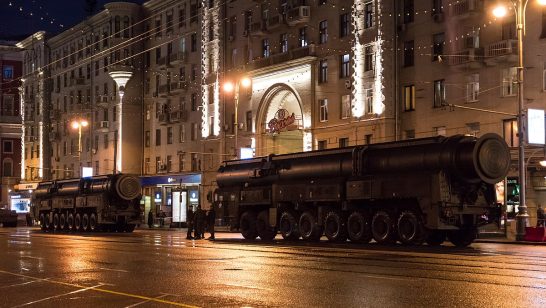
Dear ELN members and esteemed guests,
Thank you for joining us here tonight. It is good to see so many old friends and colleagues and to see the ELN growing from strength to strength. In particular, I would like to welcome our speakers at tomorrow’s meeting: we are doing something slightly different tomorrow in taking a series of expert briefings rather than engaging in our more usual seminar format and I know we will all listen to those presentations with interest before, of course, engaging in discussion.
I am pleased to see that the European Leadership Network is consistently able to bring together political, diplomatic and military leaders from across Europe, willing to make their contribution to addressing global nuclear dangers. It is encouraging to know that our network is growing not only with noteworthy members but also with wider geographical reach and greater issue-focused depth. Events like tonight’s dinner and tomorrow’s working meeting serve not only as opportunities for network members to meet each other, but also to join up often disparate, national debates and address our shared security concerns across the continent, and indeed across the globe.
Vision of Nuclear Disarmament
Five years ago, in June 2007, I gave a speech at the Carnegie International Non-proliferation Conference in Washington DC in which I called for action to pursue the goal of a world without nuclear weapons. In making that speech I became the first serving Foreign Secretary from a nuclear weapon state to openly speak about the necessary commitment to a world free of those weapons. I spoke about the need for vision in terms of the long-term goal, and action – through progressive steps to reduce warhead numbers and to limit the role of nuclear weapons in security policy. My speech echoed the call made only a few months earlier by George Shultz, Bill Perry, Henry Kissinger and Sam Nunn who argued “that without a bold vision, actions will not be perceived as fair or urgent. Without the actions, the vision will not be perceived as realistic or possible.”
Action Since 2007
Since 2007, there have been positive steps to help realise the vision. Let me highlight just three key examples:
First, in February 2008, the Chair of the ELN Board, Des Browne, offered in a speech at the Conference on Disarmament in Geneva, the first ever meeting of that body to be addressed by a Defence Secretary, to host a technical conference of the P5 nuclear weapon laboratories. Since then, the P5 countries have organised, not one but three conferences – in London, Paris and Washington – focusing on a wider range of issues related to the NPT Action Plan and discussing confidence building measures towards disarmament. A new diplomatic mechanism has therefore been opened up and is being worked actively. Whether it will produce results in time for the 2015 Review Conference of the NPT is yet to be seen but there are now multilateral talks underway among the five recognised nuclear powers where previously there were none.
Second, in April 2009, President Obama outlined his vision of a world free of nuclear weapons in a major speech in Prague. Following this, in September 2009, we witnessed the first ever meeting of the UN Security Council dedicated to the issues of nuclear non-proliferation and disarmament and the first to ever be chaired by a U.S. President. This meeting produced a Security Council resolution in which states resolved “to create the conditions for a world without nuclear weapons”. Then, in 2010 and again in 2012, two global Nuclear Security Summits took place with the world’s leaders agreeing to a series of steps to secure nuclear materials and advance nuclear security.
Third, and not un-related to President Obama’s approach, by February 2011 the US and Russia had signed and ratified the New Strategic Arms Reduction Treaty (START) in which the two countries agreed to reduced ceilings of strategic nuclear weapons and their delivery vehicles. As countries with the largest global nuclear arsenals, possessing 95 per cent of the world’s nuclear weapons, this treaty was a significant step towards nuclear arms reduction.
All of these developments are to be welcomed.
Challenges Remaining
In spite of these positive changes however, there are many reasons for remaining concern. Nuclear modernisation programmes are currently being undertaken or have just been completed in all the nuclear armed states in the world. Just consider some of what is going on:
- Although signing and ratifying the New START Treaty, both the United States and Russia have re-committed themselves to maintaining and developing either new, or improved, nuclear warheads as well as better and more dangerous delivery systems.
- China, India and Israel are currently seeking to build effective, land, sea and air launched nuclear triads, whilst France has pledged to keep and invest in its nuclear weapons for the long term.
- In the United Kingdom, the government must make a final decision in 2015 on whether to replace its aging Trident submarine-based nuclear weapons system, and the current policy is leaning towards renewal.
- Looking to South Asia, India and Pakistan are both increasing their nuclear forces. Indeed, Pakistan’s nuclear arsenal has already doubled in size in recent years, making it the fastest growing nuclear arsenal anywhere in the world.
- In the Middle East, further proliferation to countries such as Iran, with a possible resulting regional proliferation cascade, is not a far-fetched possibility. Does anyone here seriously believe that what the Middle East needs today is more nuclear weapons?
- On the issue of nuclear weapon warning and decision time, alarmingly, two decades after the Cold War ended, a significant number of nuclear weapons still remain on high states of alert. These weapons are ready to be launched at a few minutes’ notice, leaving decision-makers very little time to react to crises or to make critical decisions on nuclear weapons use.
- Two major multilateral treaties, moreover, the Fissile Material Cut-off Treaty and the Comprehensive Test Ban Treaty, have been on the international disarmament agenda for years but lack the final commitment from key states. After 17 years of deadlock, the FMCT negotiations are yet to start at the Conference on Disarmament. The CTBT has also still to enter into force with eight major states still to ratify, namely: the U.S, China, India, Pakistan, Israel, Egypt, Iran and North Korea.
- Finally, with the US presidential election now behind us, the US and Russia must find a way of managing the difficulties that undeniably remain with regard to arms control in Europe: ballistic missile defence, the issue of non-strategic nuclear weapons in Europe, including of course, in Russia, and a conventional arms control regime that is withering on the vine, all point to unfinished business and undiminished mistrust despite the end of the Cold War. Into this stagnant mix is now comes disputes over how to handle Syria, and the wider changes under way in the Middle East.
Europe, to some extent, remains divided and we must act to put our own house in order if we are to advocate progress on the part of others.
I am afraid then, as you can see, that despite the progress made so far, a long and challenging to-do list remains.
A European Voice
It is evident, of course, that creating the conditions for a world free of nuclear weapons is a serious and complex challenge. It will not happen without dynamic political leadership. Over the past few years there has been some increased political momentum, particularly from the United States, but we cannot and must not be complacent. We also cannot leave the US and Russia, as the two largest nuclear powers, to deal with these issues while we, in the rest of Europe, watch from the side-lines.
Whether as economic players of some importance, including in the nuclear industry, as members of NATO or the European Union, as active supporters of the Non-Proliferation Treaty regime and, along with Russia, as members of the P-5 group of recognised nuclear powers, all European countries have something to offer. We should not underestimate the importance of our role and should accept that we can, and must, take responsibility for making a difference.
Here in the UK, we have started to make our own distinctive contribution. In recent years, successive British Prime Ministers, Foreign Secretaries and Defence Ministers have made written and oral contributions to the multilateral disarmament debate.
Shirley Williams, here with us tonight, is a tireless advocate on these issues, having contributed substantially to an important international commission and having served as adviser to former Prime Minister Gordon Brown.
On a personal note, I was encouraged by the US Four to create a high level parliamentary group in the UK focusing on these issues. With the help of James Arbuthnot and Ming Campbell, the three of us secured the approval from our respective party leaders and approached other parliamentarians to join. After persuading Des Browne to Chair the group, in 2009, we formally launched the “Top Level Group of UK Parliamentarians for Multilateral Nuclear Disarmament and Non-Proliferation”. Its membership now boasts former Foreign and Defence Secretaries, Chiefs of Defence Staff, Diplomats and distinguished parliamentarians from all parties and many of our members are with us tonight.
This was indeed the genesis of the ELN and I am delighted to see that the national Top Level Group model is being replicated elsewhere in Europe. Italy, for example, has its own leadership group on these issues, led by Giorgio La Malfa, also here with us this evening. Thank you Giorgio, for your leadership on this issue.
The ELN itself is providing a much needed independent platform to address some of the issues I have discussed. Serving as a vehicle for leadership level dialogue on nuclear disarmament and related issues within Europe, the ELN increasingly is becoming a clearing house for expertise on political engagement on disarmament issues. Through its analytical and educational work and strategic partnerships across Europe and the US, it increasingly supports leaders who want to develop and promote workable public policy solutions that can address and reduce nuclear dangers. By virtue of its uniqueness, the ELN has opportunities where others don’t; not only deploying expert knowledge but reaching key opinion formers and decision makers where others perhaps can’t.
It is up to us now to shape the detailed ELN vision as well as to call, and work for, the necessary action. I am delighted that tomorrow we will have the opportunity to discuss some of the most pressing issues that I have touched upon tonight such as the proposed Middle East Conference on a Zone Free from Weapons of Mass Destruction, P5 efforts on global non-proliferation and disarmament diplomacy, nuclear security, and efforts to make progress on the Fissile Material Cut-off Treaty.
On behalf of the London based members of the ELN, I would like to express my gratitude to all of you for coming, and to Ian Kearns, Shata Shetty and the whole ELN team for making this event happen. I hope, and this will be my final remark, that tonight’s dinner and tomorrow’s working meeting will stimulate both bold vision and specific action. I know we are all here this evening, because we know this, and future generations, need it.
Thank you.
The opinions articulated above represent the views of the author(s), and do not necessarily reflect the position of the European Leadership Network or any of its members. The ELN’s aim is to encourage debates that will help develop Europe’s capacity to address the pressing foreign, defence, and security challenges of our time.


